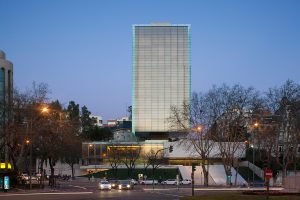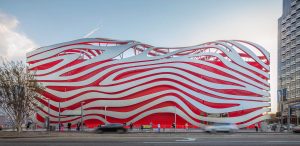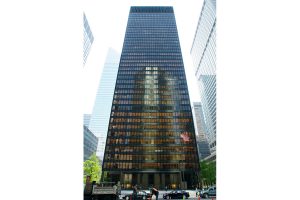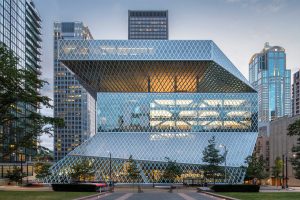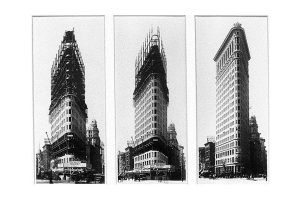Canopies And Agoras; The Cervantes Theatre by Anton García-Abril And Débora Mesa from Ensamble Estudio and the Neue Nationalgalerie by Mies Van Der Rohe as Spaces Of Reunion.
Agora
a. the marketplace in Athens, used for popular meetings, or any similar place of assembly in ancient Greece
b. the meeting itself
Architecture has been defined in many different ways over the centuries until it became the discipline that we recognize today. It encompases a varied mix of art, craft, engineering and an increasing level of information management. Nevertheless, one thing that has proved a constant throughout its history is the role of Architecture as an artificial medium to define a kind of relationship between people and the surrounding environment, be it the landscape, the sea or the city.
Agoras are places that, since ancient greek society times, have served as spaces where people meet to discuss, share, gather, talk, trade or relate in society; they are spaces that represent the values of the polis – the city.
Probably one of the minimum expressions of architecture is to build a roof several meters above the floor. The simple gesture of drawing a line parallel to the ground gives birth to an element capable of accomplishing several things at the same time: it gives shelter and protection from the climate to the people, marks a place in the city and symbolizes values of comunion and collaboration that are rooted in the spirit of the concept of city.
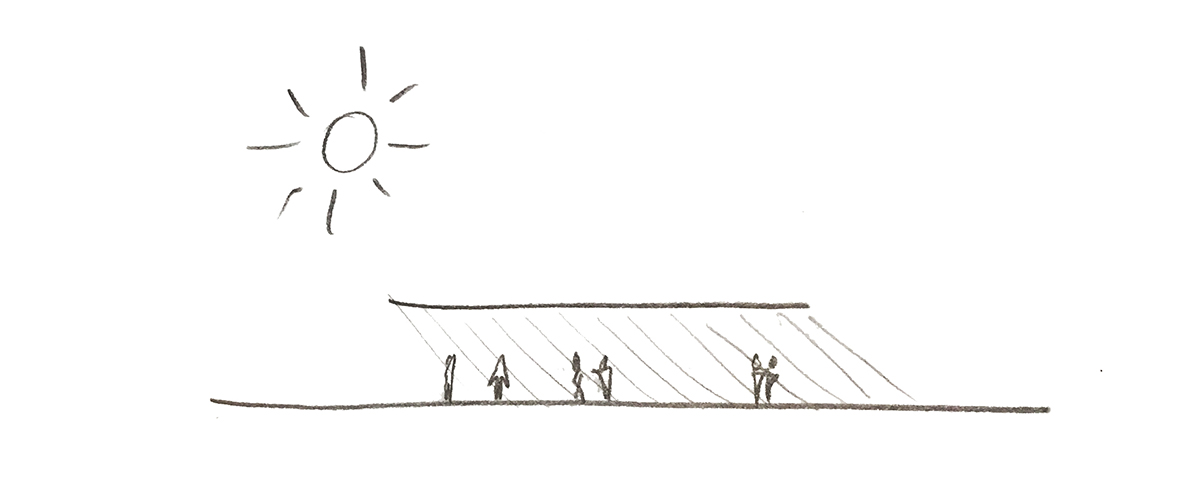
Simple sketch illustrating how people gather under a single roof that protects them against the climate.
Sketch by Antonio Moll
Black Steel modern symbols
The Cervantes theatre in Mexico City was designed by Ensamble Studio – directed by Antón García-Abril and Débora Mesa – in 2012 and its construction finished in 2013.
From the outside one can’t really tell what the building is about, because the only visible part above ground is a gigantic black steel canopy. It acts as the central piece articulating a group of buildings that surround it: the Jumex Museum, the Soumaya Museum and the Plaza Carso Shopping Mall.
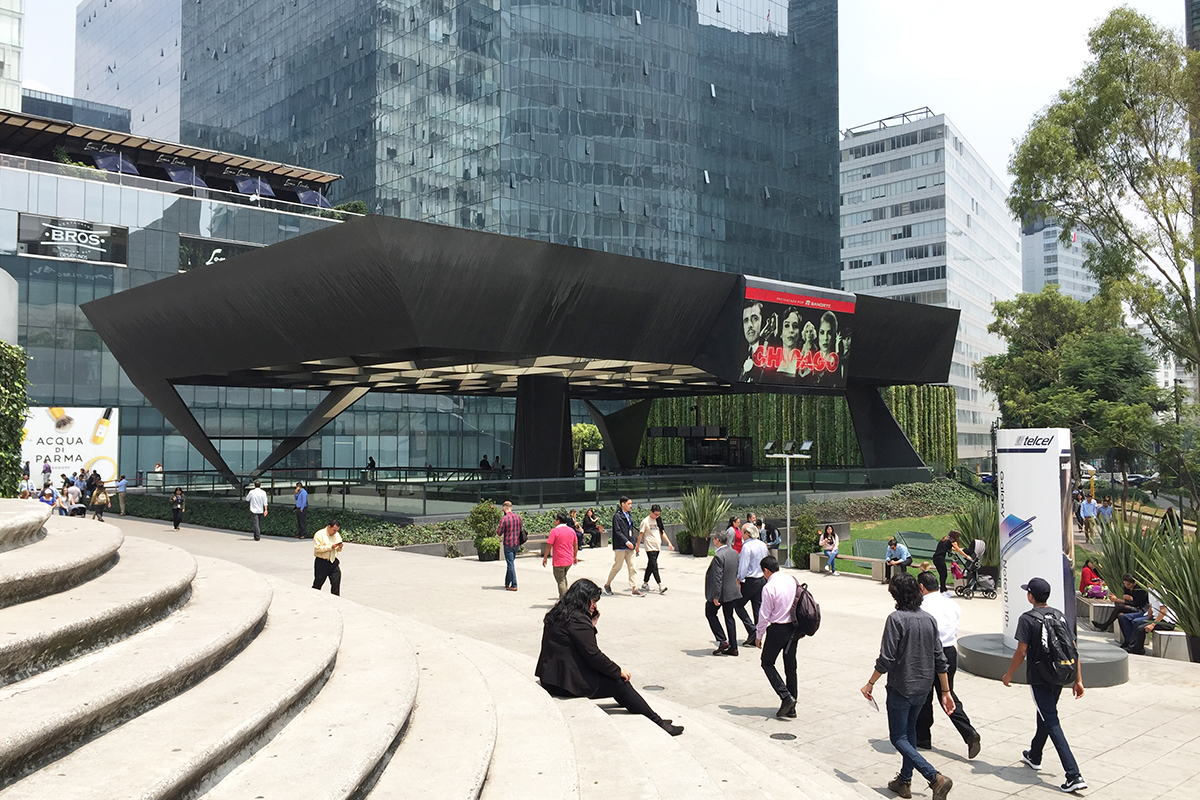
Cervantes Theatre in Mexico raises from the ground in the form of a black steel canopy supported by origami like columns. Architecture: Ensamble Studio, Antón García-Abril and Débora Mesa.
Photograph by Antonio Moll.
This floating metal keystone – as the architects refer to it – is the access lobby to the theatre, which is buried underground, and at the same time welcomes visitors to the public restaurant located inside the sunken courtyard.
I often refer to similarities with Mies Van der Rohe projects, but I think this only shows the immense influence that the german architect has had among all architects practicing these days. Is the Cervantes Theatre not a contemporary version of the temple-like typology concept proposed for the Neue Nationalgalerie in Berlin fifty years before? Are they both not heirs of the ancient greek agoras?
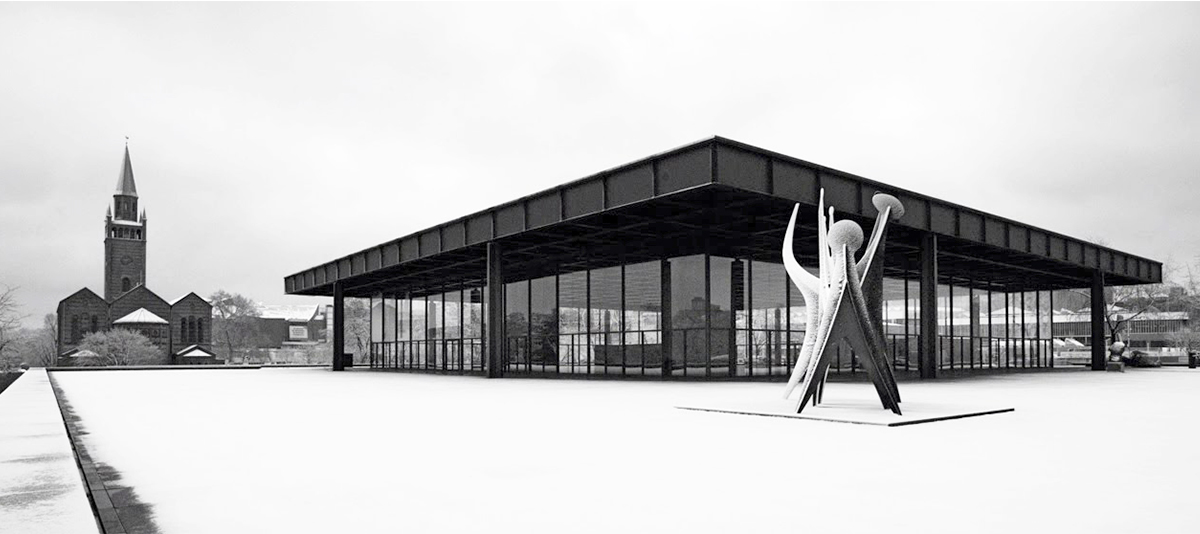
Neue Nationalgalerie in Berlin. A sculpture in the foreground by Alexander Calder welcomes visitors to the museum. Architecture: Mies Van der Rohe.
Photogram of the film Die Neue Nationalgalerie by Ina Weisse.
Both buildings stand alone in an urban void. They are composed of a buried plinth containing most of the spaces of the brief- an art gallery in the german building and a theatre in the mexican one – plus a monumental canopy that covers a gathering space and acts as a civic symbol. It seems that design and construction evolve, but the essence of building typologies remain.
Design language evolution
From the ancient temples, passing by the rational architecture of the 20th century to the contemporary designs, the look of our buildings has changed thanks to the different tools that architects and engineers can use nowadays in the studios.
Mies designs were all about dimensions, proportions and the relationships of the different parts of the building among them and the whole. He often incorporated visual corrections to his projects so they could be perceived as the pure geometries that he pursued. During the design process he liked to test his proposals producing big scale drawings and models that could bring him closer to how the real building would be perceived once built.
Some time around 1964, when the architects in his office produced a 1:5 scale drawing of the image of the Neue Nationalgalerie he realised that, due to its dimensions, the four corners of the roof gave the visual impression that they were hanging down. As a consequence Mies decided to slightly lift up each of them so the roof could be perceived perfectly flat once built.

Neue Nationalgalerie in Berlin. The corners of the black steel roof have been raised to correct the visual effect of the ends hanging down. Architecture: Mies Van der Rohe.
Photograph from masdearte.com
Ensamble’s proposal differs from the German architect´s one in the sense that all, or nearly all, of the pieces that compose the roof are different. New software has made it possible to be more precise when drawing and dimensioning steel elements so the components of the theatre’s canopy can present themselves as if they were folded sheets of paper resembling an origami figure. The steel loses its load bearing condition appearance. Its geometry also reminds me of the stealth aircrafts, demonstrating that architects can draw knowledge and inspiration from different disciplines besides architecture itself.
By means of using computers, not only during the design stages but also during the construction, it becomes feasible for an architect to avoid repetition or rationalisation and explore different and singular forms.
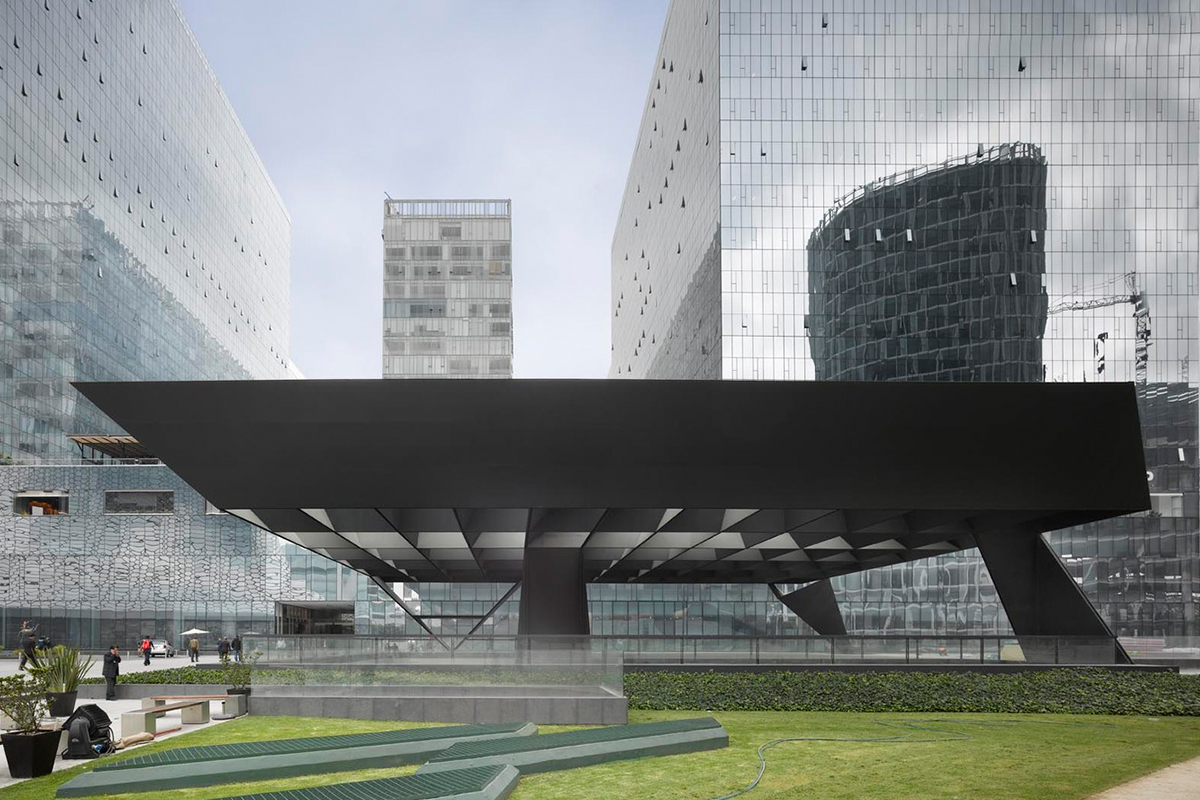
Cervantes Theatre in Mexico. Front elevation, the steel girder is covered by glass panels that let the light through to the lower levels. Architecture: Ensamble Studio, Antón García-Abril and Débora Mesa.
Photograph by Roland Halbe ©.
Construction techniques evolution
We all acknowledge the Neue Nationalgalerie as a masterpiece of history of architecture that summarizes Mies career but, besides the attractive and futuristic geometry that define the Mexican theatre’s black steel piece I also find extraordinary Ensamble design’s construction and assembled nature.
Mies’ museum construction required skilled welders to achieve a high level of precision. The different steel components arrived at the site on lorries. Once there they were moved on rails until each of them reached the correct location on the floor where they were welded. The entire roof was then lifted up in one piece to a total height of over eight metres with the help of eight hydraulic cranes in a public ceremony that lasted over nine hours.
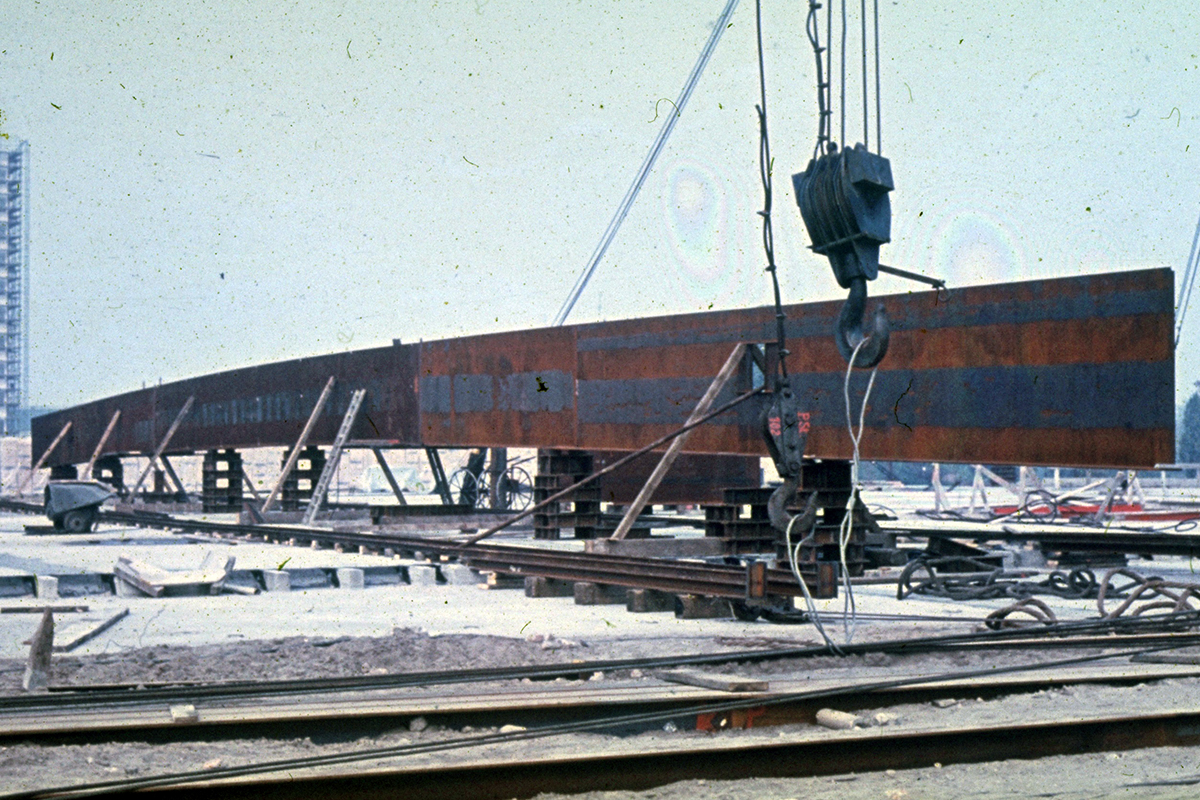
Neue Nationalgalerie steel beam on site during the construction. The different steel elements were moved on rails and pulled by lorries to their correct location. Architecture: Mies Van der Rohe.
Photograph by Heinz Oeter.
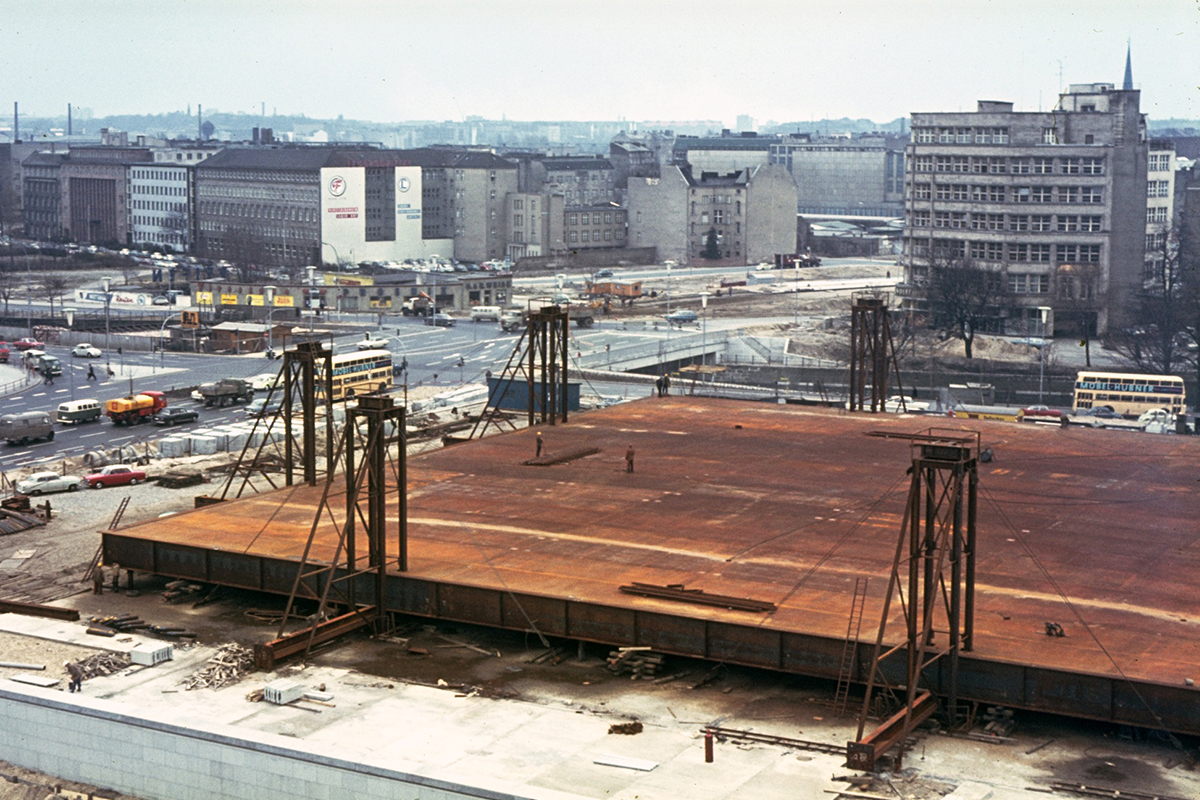
Neue Nationalgalerie roof before being lifted up with the hydraulic cranes during a public ceremony in 1967 . Each of the segments in which the side beam is divided is 3.6m long. Architecture: Mies Van der Rohe.
Photograph by Heinz Oeter.
On the contrary and in line with contemporary possibilities, García-Abril and Mesa decided to design a canopy that was composed of a series of precisely cut, full-length ribs with slots for them to interlock. They even tested their design assembly at the factory before dismantling it again and transporting it to the site for its final construction. Once on site, each of the ribs was lifted up individually by means of a crane and later welded at its final position.
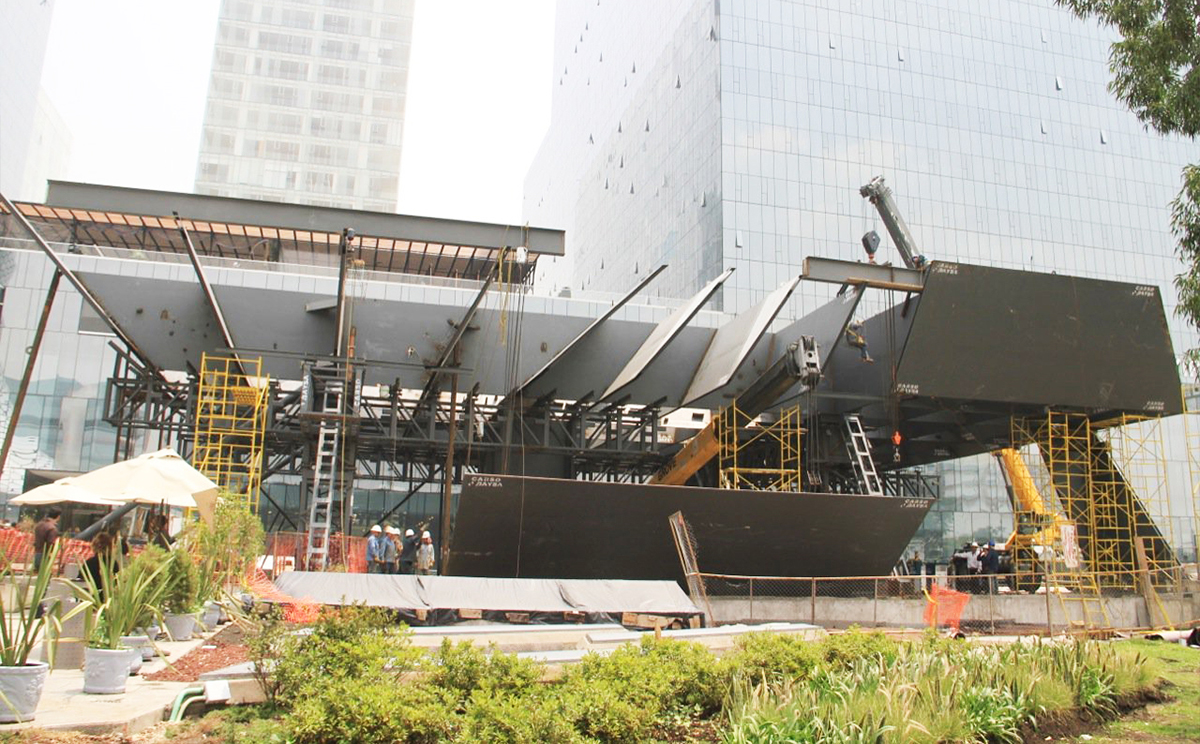
Cervantes Theatre during the steel ribs construction. The beams are put together by means of interlocking slots and welded at its final position. Architecture: Ensamble Studio, Antón García-Abril and Débora Mesa.
Photograph by Ensamble Studio.
Architecture is for the people
Our tools at the design studios change and it is logical that the results obtained also change but, there are things in architecture that remain. It serves people in our quotidian life actions, it offers us places to gather and enjoy a theatre play, a concert, to eat in the shadow, to protect us from the sun,rain or wind; and it serves society expressing the values of the community in a certain place at a certain time.
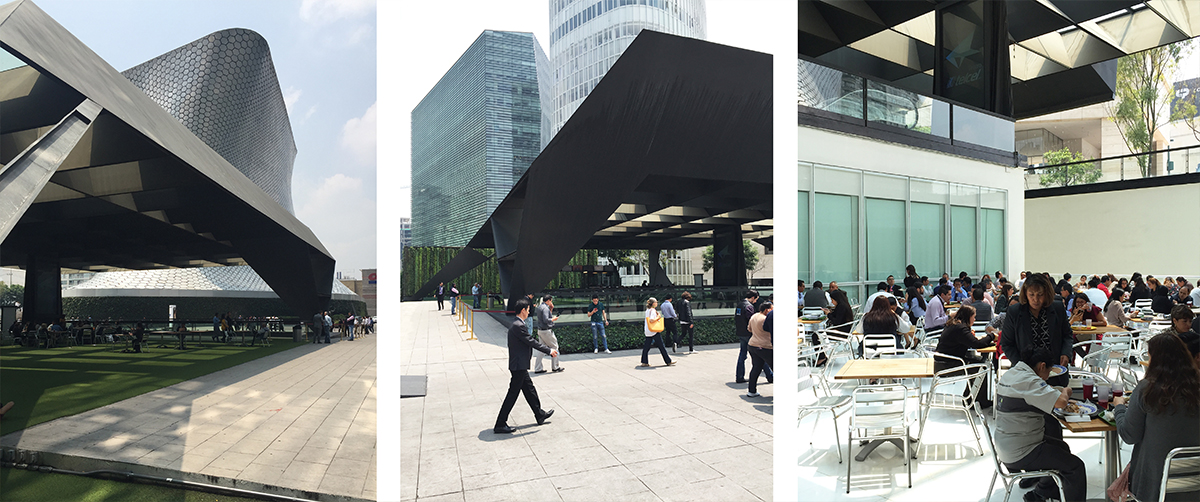
Cervantes Theatre. The canopy serves the public space in different ways, it signals a place, it protects from the sun or rain and it functions as the lobby for the restaurant and theatre buried underneath. Architecture: Ensamble Studio, Antón García-Abril and Débora Mesa.
Photograph by Antonio Moll.

